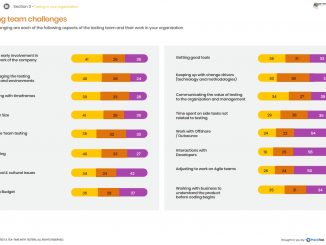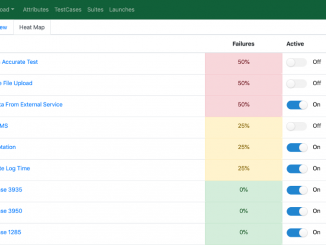Tutorials and resources on how to apply test automation in software testing
Botium is a quality assurance framework for testing and training conversational AI. This presentation covers the Selenium driver for Botium to automate E2E tests on Web UI and mobile along with testing strategy, testing NLP models and automating these tests to the CI/CD build pipelines with a DialogFlow based ‘Coffee-Shop bot’ as an example during the demo.
Have you ever met a widely known Selenium issue that drag and drop gesture doesn’t work for Selenium in some cases? This bug has been around for years and Dmitrii Bormotov will tell you how to resolve it, especially in just a few lines of code if you use Python.
PractiTest has released its eighth annual State of Testing© report containing insights from software testing professionals from around the world. This document confirms the growth of test automation and that software testers are working more and more outside their traditional QA silo.
This video shares strategies for successful automation, the challenge of flaky tests, the perils of UI automation, and many other tips based on experience in test and test automation across dozens of high volume products. Whether you are deeply invested in test automation, or just getting started, learn practical tips you can apply to your own testing efforts immediately.
The bigger question for software development teams embarking on their test automation journey is “What to test?” My rule of thumb is “Start with the scariest code”. This presentation shares with you a framework for evaluating the ROI of writing a test for a feature and prioritizing what to test.
QuAck is a web-based open-source test management tool that can store test cases and test suites and execute them. It is based on a pluggable architecture that allows implementation of custom authentication providers, integration with tracking and test executing systems. This article presents the key features of QuAck.
PractiTest, the leader in testing management solutions, announced that its newly-released testing automation management solution update could be used to prevent software crashes similar to the one experienced in Massachusetts when it opened up COVID-19 vaccination appointments to Priority Group 2 Phase 2 residents.








